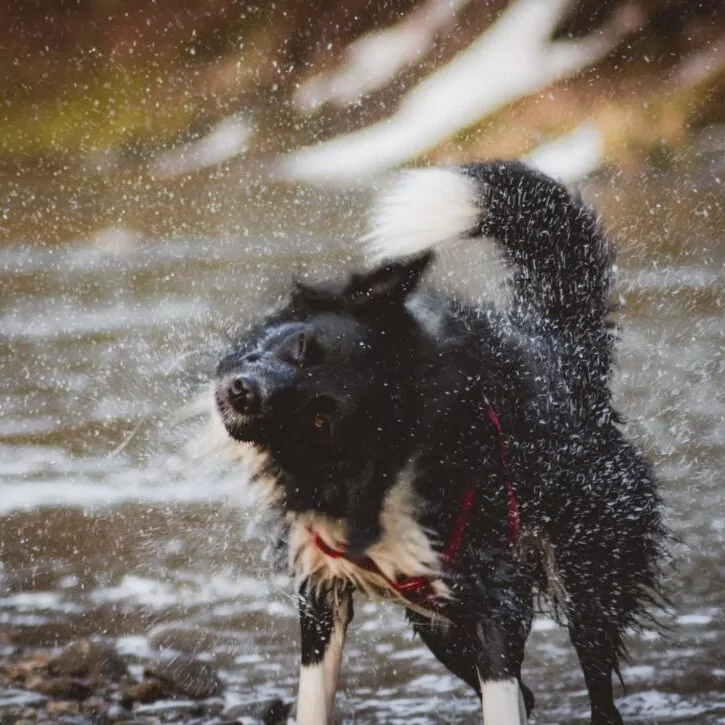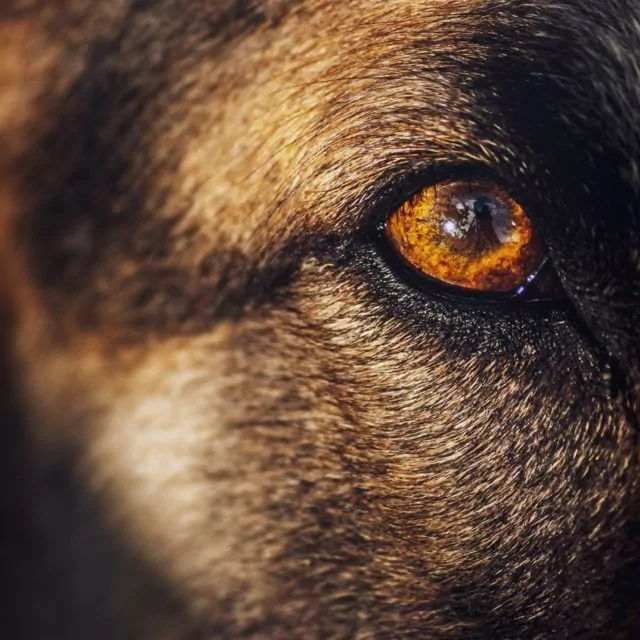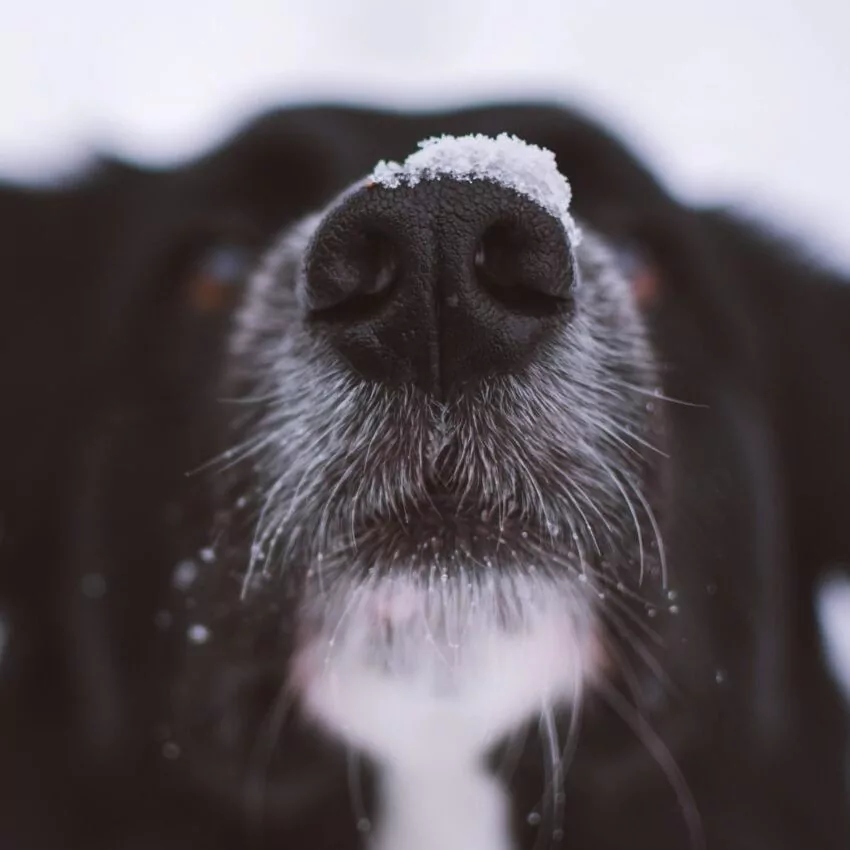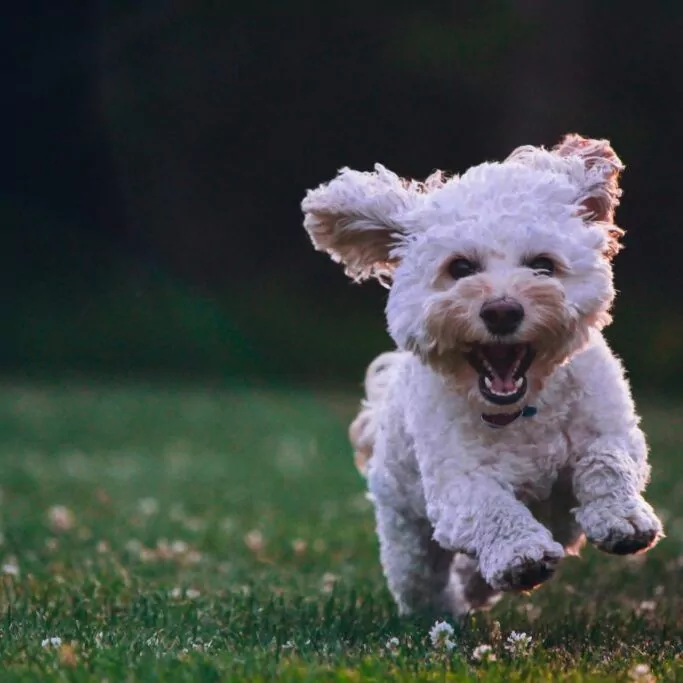Behavior & Symptoms
Why Do Dogs Lick Their Feet?

Corn cobbing isn’t enjoyment of corn on the cob slathered with butter and salt or even the typewriter motion we use when eating it. It’s the nickname for the sight and sound of a dog frantically nibbling between his toes and on his paws. Yuck! And ouchie!
Dogs depend on their feet to walk and romp on all types of surfaces, from a cushy living room rug to rugged hiking trails. That’s why it’s critical to tap into your pet detective skills at the first sign of your dog licking or chewing his feet excessively. It’s not necessarily a benign habit. As annoying as it can be to you, it’s often downright distracting to your dog, who may be experiencing itchiness or pain.
What Paw Licking Means
Dogs lick their paws excessively for many reasons, from underlying medical causes to sheer boredom. Figuring out whether they are licking because they’re itchy, painful, or stressed can be a challenge but it’s an essential element of arriving at a diagnosis and treatment.
“Excessive licking of the paws, biting the nails are all ways a dog can show itch,” says Ashley Bourgeois, VMD, DACVD, a board-certified veterinary dermatologist, founder of The Derm Vet, LLC, in Portland, Oregon, and host of The Derm Vet podcast.
Another clue is a color change in paw pads. If your dog’s normally dark paw pads are now hues of pink or orange, seek veterinary treatment. Saliva released by the excessive licking contains a substance called porphyrin, which breaks down red blood cells, causing the change in color. Your dog’s veterinarian may discover an underlying health issue that’s causing your dog to lick.
One of the most common reasons for paw licking is contact or environmental allergies. Contact allergies may be caused by detergent used to launder the dog’s bedding or cleaning products used on floors or carpet. Environmental allergens include pollens, grasses, and molds.
“I can really empathize with owners who have allergic pets because I live and breathe it with my own,” Dr. Bourgeois says.
Her 1-year-old dog, whose bloodlines are a blend of Labrador Retriever, American Pit Bull Terrier and Boxer, has significant allergies. And she has faced the same challenges as other dog owners in diagnosing and managing her dog’s allergies.
“I have performed cytology to look for infection and done a diet trial and environment allergy testing in her,” Dr. Bourgeois says.
Nailing Causes of Paw Licking
The list of reasons why dogs may lick their paws is longer than an Irish Wolfhound. (And that’s pretty long!) Here is a rundown of what to look for and what may help.
- Environmental or contact allergies. Itching, hair loss, redness, and rashes are among the signs of these types of allergies. Since your dog’s paws frequently touch floors, bedding, and grass, they may be where signs manifest. You can help by wiping or washing your dog’s paws after he has been outdoors or switching to cleaning products free of scents and dyes.
- Food allergies. If you switch dog food brands, your dog may start licking his paws because an allergy to one or more ingredients in the new food causes his paws to itch. For food, environmental, or contact allergies, Dr. Bourgeois and other veterinarians may conduct intradermal allergy tests to identify the allergen and then prescribe allergen-specific immunotherapy to help relieve the itch.
- Parasites. Fleas, ticks, and mites can lodge between toes, causing itchiness, swelling, hair loss, and diseases. Keep these pesky parasites off your dog by administering parasite preventive year-round. And inspect your dog from head to tail after hikes for ticks, which typically like to hide in the lower lip, between toes, and beneath the collar, armpits, and tail.
- Secondary bacteria or yeast infections. Signs of infection include discharge and even a stinky odor from the feet (think corn chips or popcorn). Your veterinarian will run tests to identify these types of infections and prescribe a medication to help your dog heal.
- Skin infections. Lick granuloma, also known as lick dermatitis, is a lesion, or sore, caused by excessive licking to relieve itching, becoming a never-ending cycle. It can become infected and require oral antibiotics and steroids to combat inflammation and pain.
- Insect bites or stings. If your dog is frantically licking a specific paw, he may have been stung by a bee or bitten by some other insect. Use your credit card or driver’s license in a spatula-like movement to flick out the stinger. Avoid using tweezers to remove the stinger as you risk rupturing the venom sac and spreading it in your dog’s body.
- Cysts and growths on paws. Senior dogs and those with some types of skin cancer may display growths on paws and other parts of their bodies. If you notice a growth on your dog’s paw, seek veterinary care.
- Foreign body. Dogs may lick excessively in an attempt to remove a small stone, burr, or other object embedded in their paw. If you notice licking, carefully inspect each leg and paw for embedded objects. Depending on how deeply embedded it is, it may require removal by a veterinarian.
- Injuries. Rocks or broken glass can cut or tear paw pads, causing them to bleed and your dog to lick them in an attempt to relieve pain. Or he may misjudge and whack his leg against the fence while running in the backyard, causing his leg and paw to swell and become painful. Use a wide leash, large towel, or other item to act as a sling to take the weight off an injured paw or leg when you are transporting your dog to the veterinary clinic.
- Weather. Extreme weather can take a toll on a dog’s paws. Exposure to cold temperatures can leave paws dry and cracked. Icicles or de-icing chemicals can stick to paws. To remove, place each paw under warm water and dab dry (don’t rub) with a clean cloth. Make sure your dog doesn’t lick his paws! When temperatures soar, a dog’s paws can burn from walking or standing on hot sidewalks or asphalt surfaces. On a 77-degree day, a sidewalk’s surface temperature can be 125 degrees and cause up to a second-degree burn to paw pads in just a few minutes if the dog remains standing in the same place. Get the dog out of the heat and dip each paw in cool water.
- Ingrown nails. A dog may lick at his paw because his nails are too long and are curling under and growing into the pads. Regularly inspect your dog’s nails and trim them or arrange for a nail trim appointment at a dog grooming salon or veterinary clinic.
- Stress-induced anxiety. A dog who is afraid of thunderstorms or loud noises may lick his paws as an attempt to self-calm. Work with your veterinarian and an animal behaviorist on a treatment plan best for your dog.
- Compulsive behaviors. Excessive licking or actions such as spinning or tail chasing can be signs of this disorder. Dogs exhibiting compulsive behaviors can lick their paws raw and may require anti-anxiety medications and behavior modification.
- Boredom. Some dogs, especially those who love to learn and be active, start licking out of boredom, as a way to pass the time if they are frequently left home alone or don’t receive enough physical and mental stimulation. Licking can develop into a habit unless you add keep-busy toys or food puzzles to help occupy their time and exercise their bodies and brains.
Paw Care Tips
A dog occasionally licking his paws for a short duration is usually no cause for alarm – it’s part of their normal grooming routine.
At least weekly, inspect your dog’s paws and nails and keep them trimmed. One way to reduce possible licking or chewing of paws is to immediately clean dirty paws. Soak a washcloth in warm water and wipe the paws. Applying a dab of Vitamin E oil can help soften dry pads.
Don’t ignore excessive licking. It’s a sign that your dog is uncomfortable or even painful. “If these behaviors are non-distractable or causing damage to the skin–redness, scaling, hair loss, crusting–then it is important to consult with your veterinarian,” Bourgeois says. “We have more success with these patients if the signs are caught early.”
Resources
*cvm.ncsu.edu/a-breakthrough-in-understanding-canine-itch/
*www.ncbi.nlm.nih.gov/pmc/articles/PMC6826574/
*www.avma.org/javma-news/2019-12-01/study-links-skin-allergies-dogs-problem-behaviors
* www.ItchyPetAwarenessMonth.com
* ItchingForHelp.com
* ZoetisPetCare.com
Did you find this helpful? Share it!
Questions for your Vet
- We do a lot of hiking with our dog. Do you recommend fitting him with doggy booties? Why or why not?
- What is the best way to remove burrs or other objects from my dog’s paws?
- How should I clean my dog’s paw pads if they are bleeding or injured?
About VetScoop
Pets make our lives better. At VetScoop, we’re on a mission to return the favor by giving you access to trustworthy, science-based information so you can provide the best possible care for your pets.
Related Articles We Think You'd Like





